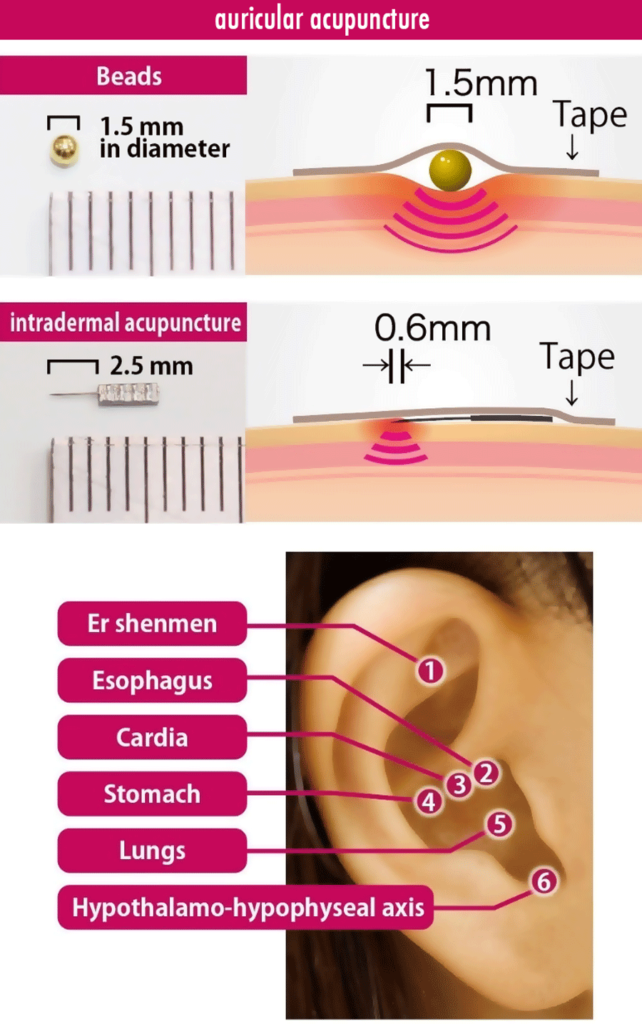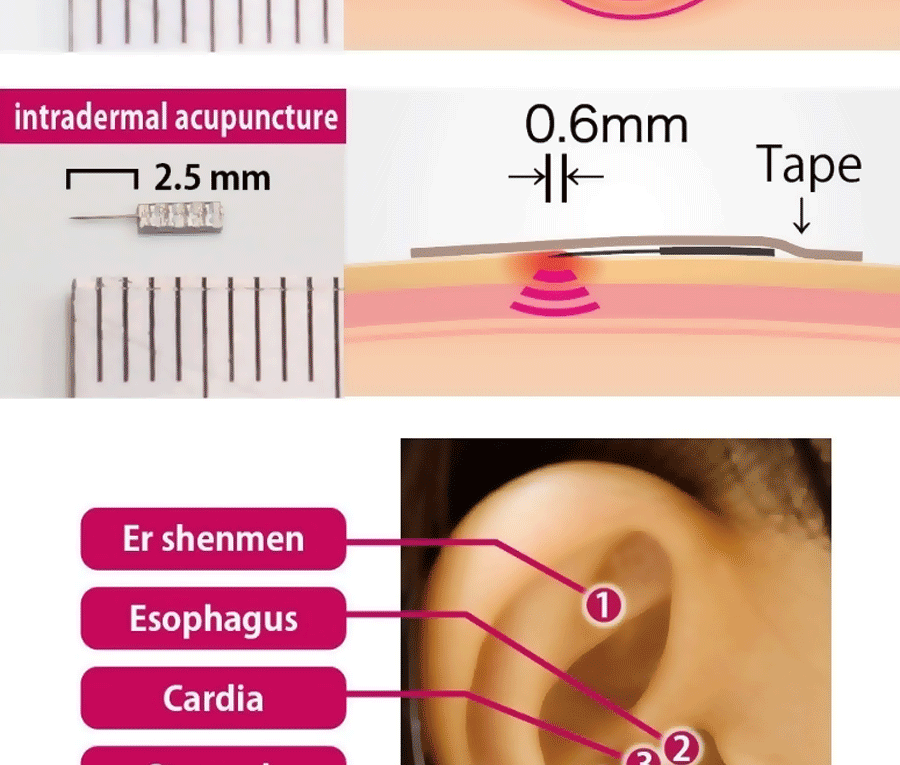Potential Benefits of Bead Ear Acupuncture in Enhancing Weight Loss Efforts
According to research, ear acupuncture using metal beads could aid in the reduction of weight, body fat and BMI when combined with a restricted diet.
This study suggests that food cravings could be better managed with an easier method of acupuncture stimulation using beads instead of intradermal needles, which require professional acupuncturists for traditional intradermal needle acupuncture treatments.
Acupuncture doesn’t require complex skills or knowledge since small metal beads attach directly to six points on the outer ear that stimulate organs and nerves involved with hunger, satiety, and appetite regulation. Japan has used this weight loss method for more than 30 years.
Traditional Chinese medicine’s concept of acupuncture stems from its belief that health depends on an ideal flow of energy or “chi” throughout your body.
Chi energy flows along invisible meridians found throughout the body, including ears. Any blockage to its flow could negatively impact physical and mental wellbeing.
Ear, or auricular acupuncture is based on the principle that all parts of the body are represented in the outer ear. Thin beads are then strategically positioned along meridian lines at certain points to restore chi flow by clearing away disruptions or blockages and could help treat various health conditions.
Method has been successfully employed for treating drug addiction as well as helping individuals quit smoking and lose weight.
Though its precise mechanism remains unknown, research indicates that ear acupuncture could assist in modulating metabolism, regulating the endocrine system, improving digestion and decreasing oxidative stress levels.
This research expands upon previous work conducted among overweight or obese Japanese women which found that bead ear acupuncture treatments led to significantly greater weight loss compared to untreated individuals, and sustained for up to six months after treatment ended.
This study of 81 overweight or obese Japanese men aged 21-78 with high levels of abdominal fat and an average BMI of 28.4 kg/m2, with high abdominal fat concentrations, evaluated auricular acupuncture using 1.5 mm metal beads on 6 points on their outer ears that corresponded to organ systems such as the endocrine system, lungs, stomach opening, food pipe, and shen-men.
Beads were placed on both ears using surgical tape to secure them for consistent pressure on each of the 6 acupuncture points. Replacement of beads occurred twice weekly. Furthermore, body weight measurements were taken while providing diet guidance guidance.
At the start of treatment, individuals were instructed to maintain food diaries and decrease total food consumption by half over three months.
All participants were measured and weighed before and after treatment, including abdominal fat, BMI, muscle mass, lean mass, fat mass percentage of body fat mass percentage, body weight percentage. Auricular acupuncture using beads could provide insight into its impact.
Substantial changes were seen after three months, with an average reduction in body fat from 28.2% to 24.3% and 10.4cm of waist circumference loss (from an initial average of 98.4cm at the start of the study to an average reduction to 88cm).
Unhealthy abdominal body fat measures also saw significant improvements, falling by two points on average from 15.2 at the start to 13 at the end of 3 months (based on a scale from one to 59; with ratings between one and 12 representing healthy visceral fat, and ratings 13 through 59 indicating excessive levels). Furthermore, BMI declined nearly three points (BMI 28.4kg/m2 on average fell to 25.5 kg/m2).
Results have revealed that ear acupuncture could aid weight loss when combined with exercise and diet. Acupuncture could have an immediate and positive impact by curbing cravings, increasing metabolism and aiding digestion.
Researchers acknowledge several limitations to their study, such as its observational nature over a short period and use of a small group of men; as well as the difficulty in proving causation.

